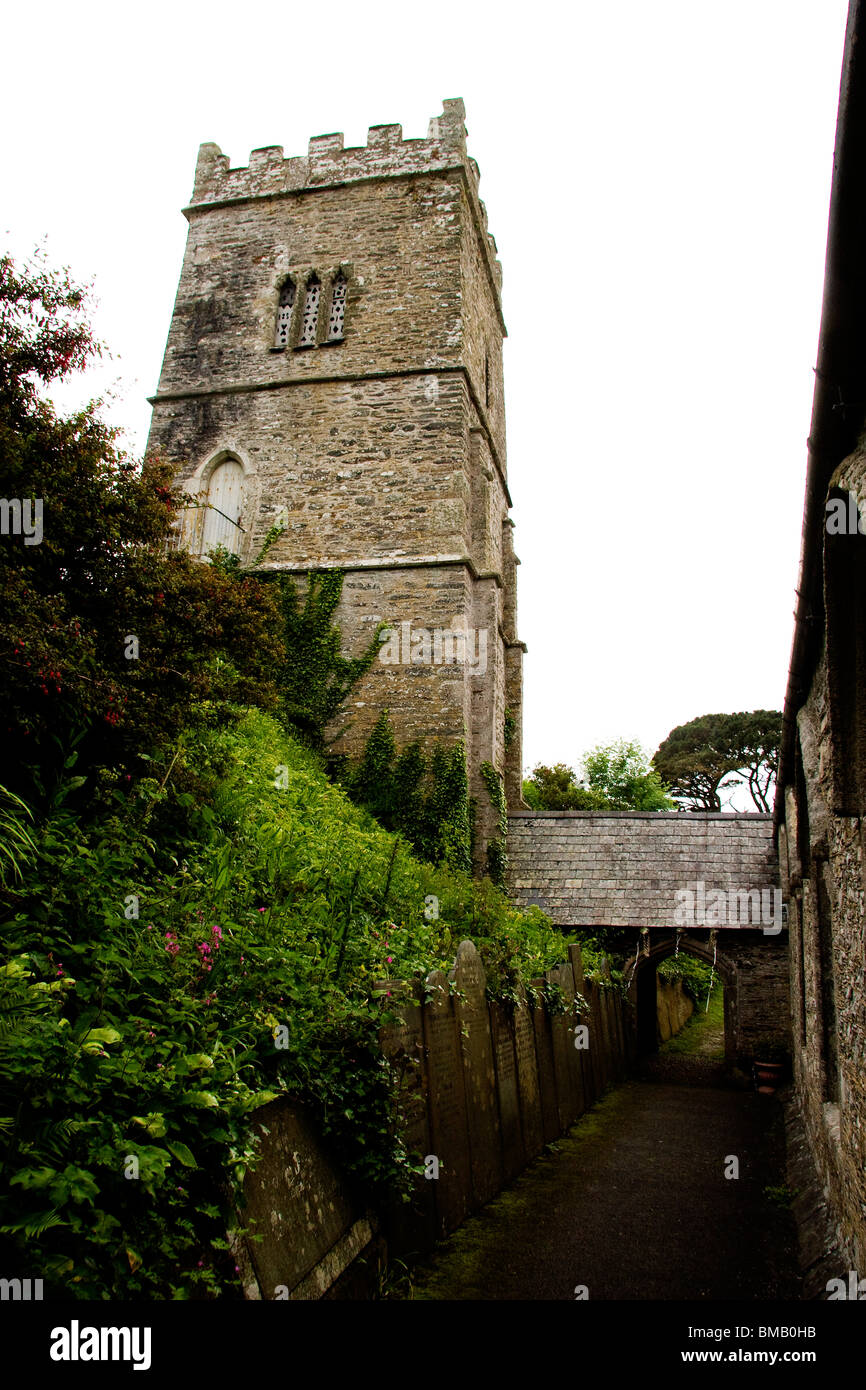Entry path showing the tower and gravestones at Talland Parish Church near Looe in Cornwall, UK

Image details
Contributor:
John Hopkins / Alamy Stock PhotoImage ID:
BMB0HBFile size:
55.6 MB (3 MB Compressed download)Releases:
Model - no | Property - noDo I need a release?Dimensions:
3600 x 5400 px | 30.5 x 45.7 cm | 12 x 18 inches | 300dpiDate taken:
28 May 2008Location:
Talland Parish Church, Talland, Looe, Cornwall, Great Britain, UKMore information:
Talland Parish Church is dramatically located on the cliff-top at Talland near Looe in Cornwall, is dedicated to St Tallanus and as such is unique in Britain. St Tallanus is said to be a hermit who made his home here sometime in the fifth century AD and certainly the site has been a sacred place since Celtic times. The altar of the present-day church is situated on the site of the original Celtic altar. The altar of the church is said to date from the time of Tallanus and was built at the junction of ley lines. However, St Tallanus's existence is disputed and ley lines cannot be proved to exist either. The first documents to refer to him only appeared in the 15th century and it is believed that the church was previously dedicated to Saint Catherine of Alexandria after whom the Catherine Wheel is named. The church celebrated its 500th anniversary in 1990. Part of the nave and the first stage of the tower probably remain from a 13th-century church: the remainder must be late 15th century and is in typical Cornish Perpendicular style. Unusually it has a detached bell-tower on the south side which was only joined to the main body of the church in the 15th century. Inside the church is the headstone of Robert Mark although there is some confusion over exactly who he was. Killed in 1802, some accounts say that he was a Polperro smuggler shot at sea, others that he was a revenue collector killed on duty. His tablet reads: "In prime of life, most suddenly, Sad tidings to relate, Here view my utter destiny, And pity my sad state. I by a shot which rapid flew, Was instantly struck dead." There is old woodwork in the fine wagon roofs and the many benchends (partly ca. 1520, the rest ca. 1600) are of the usual Cornish type and among the finer examples of these